Sheikh Safi Khanegah and Shrine Ensemble in Ardabil
Exploring the Legacy of Sheikh Safi al-Din Ardabili's Tomb

Discover the Sheikh Safi al-Din Khanegah and Shrine Ensemble in Ardabil, a remarkable historical and architectural marvel. This UNESCO World Heritage site, situated in the northwest of Iran, embodies the essence of Sufi traditions dating back to the Safavid era. The complex, named after Sheikh Safi al-Din Ardabili, founder of the Safavid dynasty, showcases an intricate blend of Islamic architecture and Persian culture, making it a must-visit for history enthusiasts and travelers alike.
Visitors are invited to explore the array of stunning buildings within the ensemble, including mosques, a library, schools, and a mausoleum. The site’s highlight, the Sheikh Safi’s mausoleum, features a dome adorned with dazzling tiles and calligraphy, standing as a testament to the era’s craftsmanship. The ensemble not only serves as a spiritual center but also as a vivid exhibition of Iranian art, with its exquisite tilework, calligraphy, and architecture.
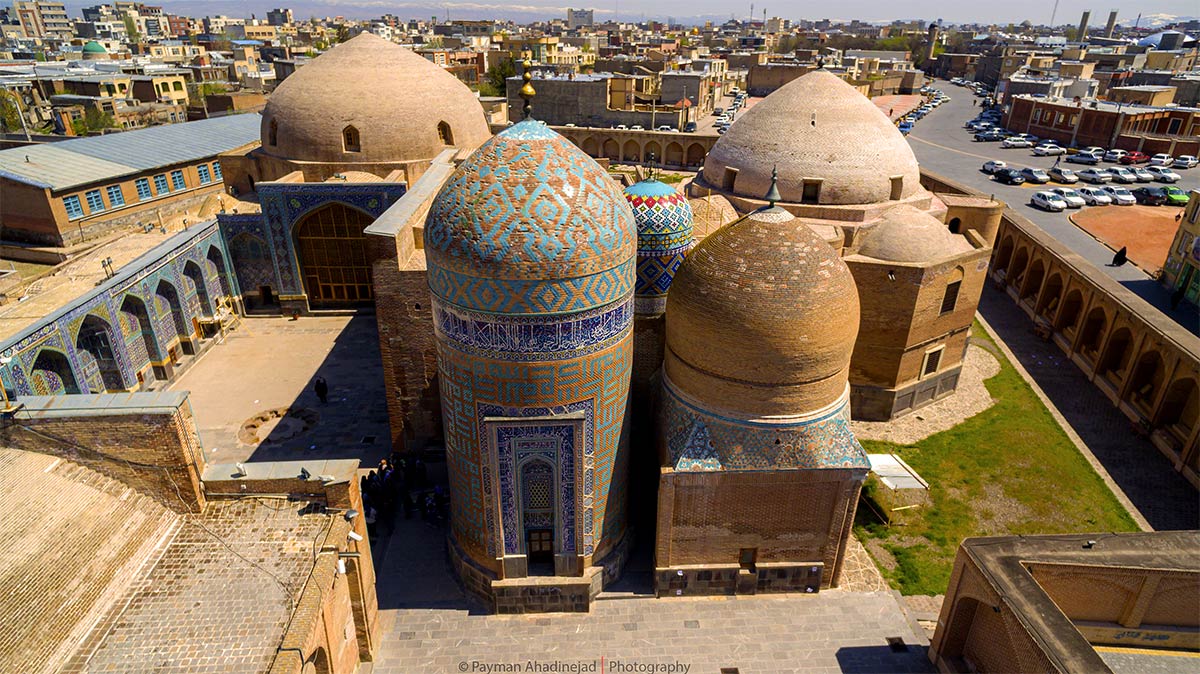
Key Facts
- Historical Significance: Sheikh Safi al-Din Ardabili (1252-1334) was the spiritual heir and son-in-law of the great Sufi Murshid, Sheikh Zahed Gilani. He transformed the local Sufi order in Ardabil into an international religious movement. His teachings and the order played a foundational role in the establishment of the Safavid Dynasty in Persia (1501/02 – 1722), which introduced Shiite Islam as the state religion.
- Architectural Marvel: The Sheikh Safi al-Din Khanegah and Shrine Ensemble in Ardabil is an outstanding example of Islamic and Persian architecture, reflecting the artistic and spiritual zenith of the Safavid era. It contains all elements characteristic of 16th-century Safavid architecture, making it a fundamental prototype of religious complexes from that period.
- Cultural and Educational Hub: Initially functioning as a microcosmic city with bazaars, public baths, religious facilities, houses, and offices of its own, the ensemble served as a center for social, religious, charitable, cultural, and educational functions. It met the physical and spiritual needs of its residents and pilgrims, including education, healthcare, and livelihood.
- Spiritual and Religious Importance: The ensemble symbolizes the introduction of Shiite Islam under the Safavid dynasty as a state religion. It served as a pivotal center for the propagation of Shiite beliefs and the Safavi credo, extending its influence beyond Iran to places as far as China and Africa. The shrine has been a place of pilgrimage and devotion, drawing visitors from all around Iran and other Muslim regions.
- Universal Value: Recognized for its outstanding universal value, the ensemble was inscribed on the list of national heritage in 1931. It represents a significant stage in human history, showcasing the architectural, technological, and landscape achievements of the time.
- Legacy of Peace and Sanctuary: Ardabil, and specifically the ensemble, was known as a place of security and sanctuary (Dār al-Amān), respected even by foreign powers and invaders for its spiritual significance. The ensemble has been a symbol of peace, where even animals and plants are considered safe.
- Center for Safavi Credo: Sheikh Safi al-Din’s teachings and the ensemble have been central to the existence and propagation of the Safavi credo. The ensemble is considered the most perfect, influential, beautiful, and exquisite mystical complex, reflecting Shiite principles.
Contents
Who was Sheikh Safi al-Din

Sheikh Safi al-Din Is’haq Ardabili (1252-1334), the founder of the Safavi dynasty, was a seminal figure in Persian history, whose spiritual legacy shaped not only the Sufi order he led but also the socio-political landscape of Persia.
Born in Ardabil, Sheikh Safi al-Din was a spiritual successor to Sheikh Zahed Gilani, under whose guidance he embraced and later expanded the Sufi tradition. His teachings and leadership extended the Safavi order from a local to an international movement, laying the foundations for the Safavi dynasty’s rise to power in Persia.
Location of the Shrine
This tomb, known as the Sheikh Safi al-Din Khanegah and Shrine Ensemble, is located in Ardabil province and city. You will find this mausoleum within the city, on Sheikh Safi Street.
The Historical Significance
The roots of the magnificent tomb of Sheikh Safi al-Din Ardabili trace back to the 13th century when Sheikh Safi al-Din, a grand Sufi master and spiritual leader, established his mystic school in Ardabil. Sheikh Safi al-Din’s teachings and spiritual guidance attracted many followers towards him.
Following the demise of Sheikh Safi al-Din Ardabili in 1956, his descendants erected a mausoleum in his honor, which over time, evolved into a splendid pilgrimage site. By the 16th century, during the reign of Shah Ismail I, this mausoleum had transformed into one of the most beautiful architectural masterpieces.
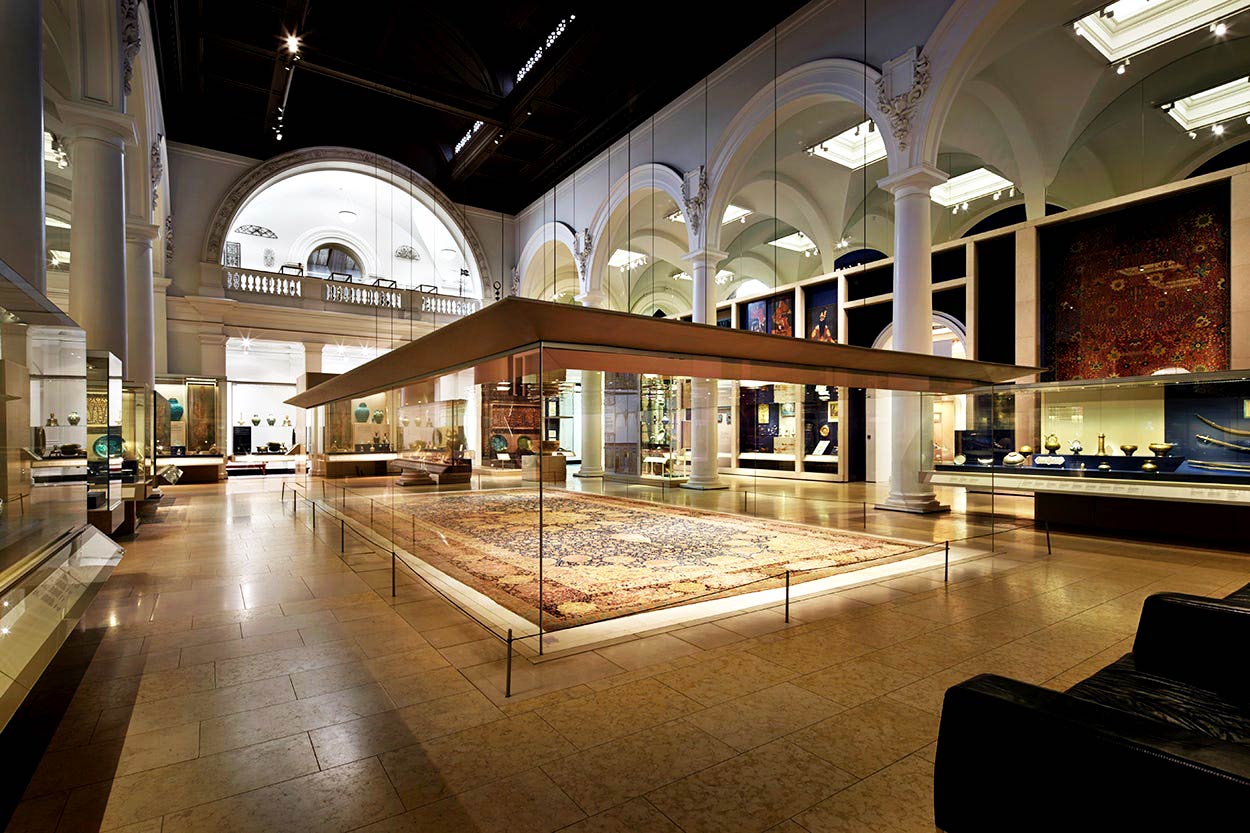
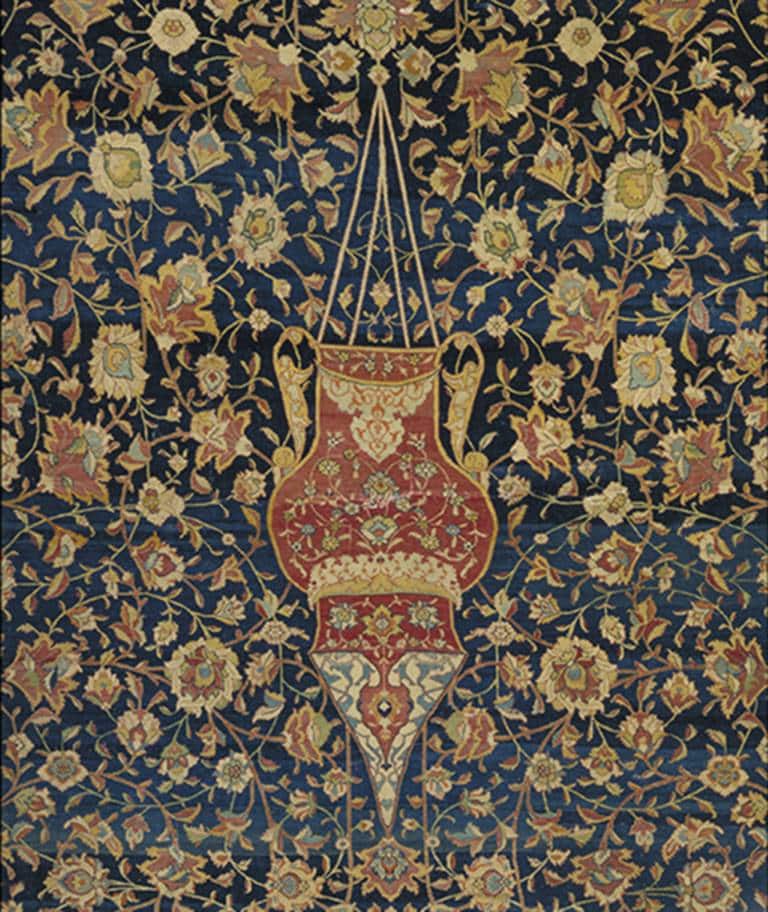
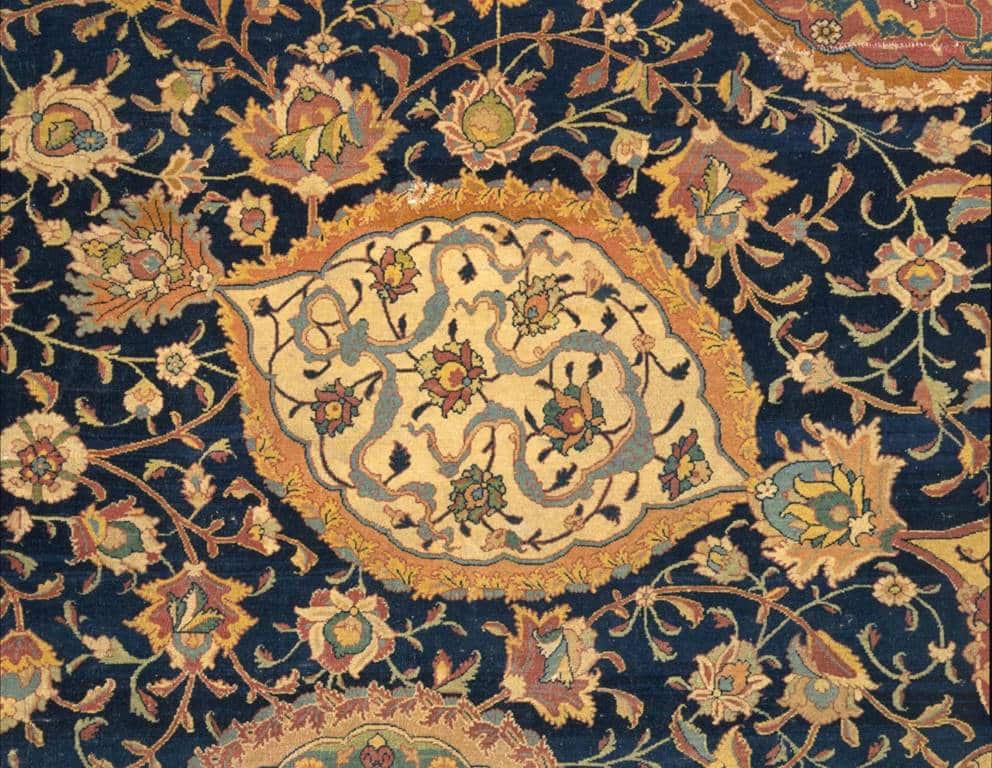
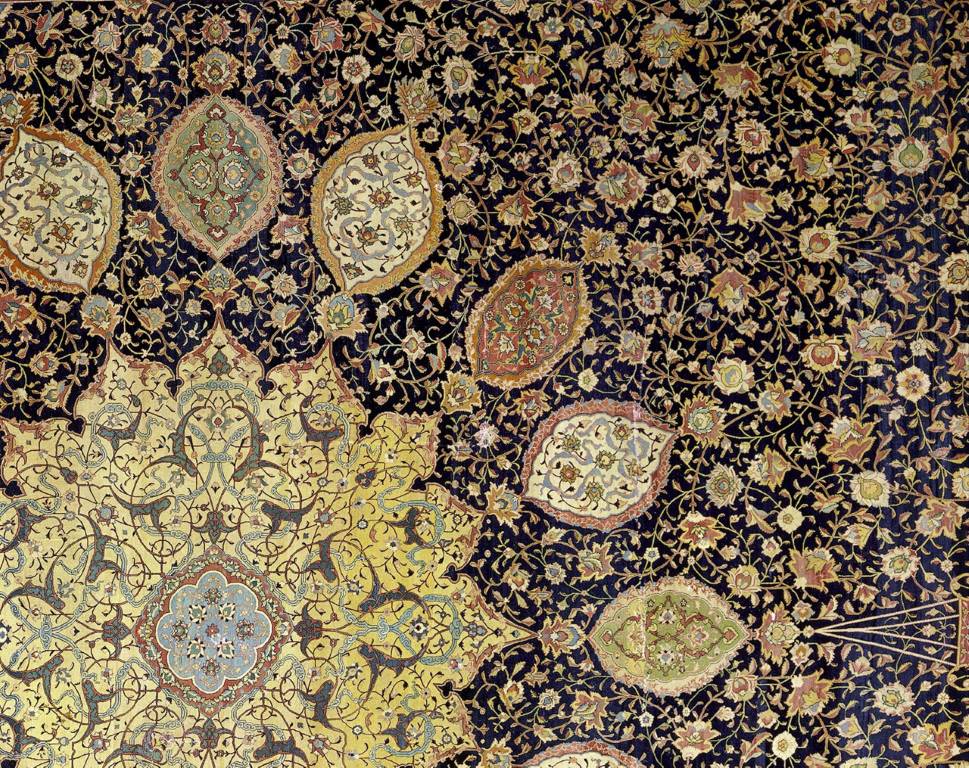
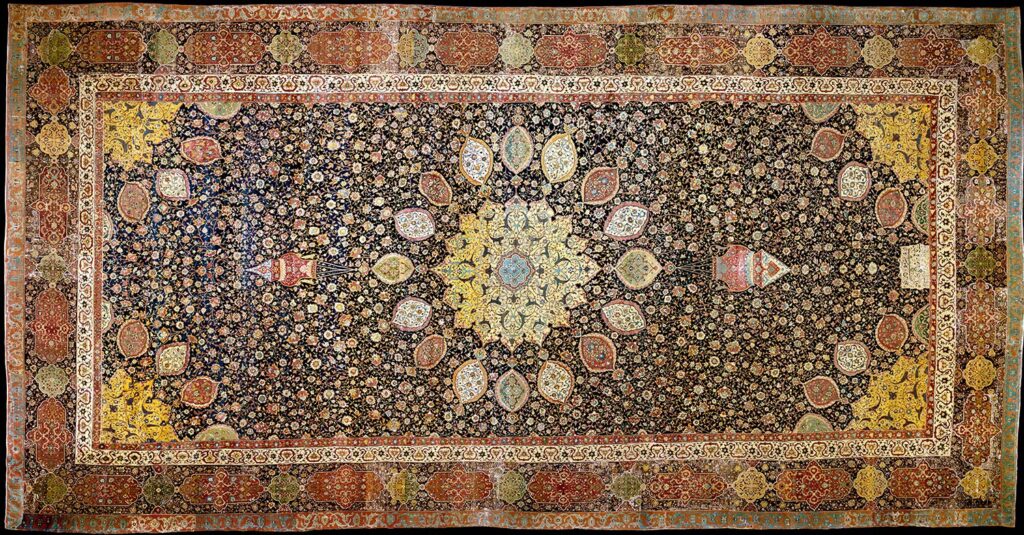
Throughout its existence, the Tomb of Sheikh Safi al-Din Ardabili witnessed several significant historical events; one notable instance occurred in the 18th century when a severe earthquake damaged the structure. Subsequently, the descendants of the Safavid dynasty undertook extensive restoration efforts.
Today, the Tomb of Sheikh Safi in Ardabil is recognized as a pilgrimage site and a valuable cultural treasure.
The site houses not only Sheikh Safi’s tomb but also the graves of other members of the Ardabili family.
This place transcends a mere worship site as it accommodates a magnificent museum displaying manuscript copies and art pieces from various periods of Iranian history.
Architectural Highlights
The Tomb of Sheikh Safi al-Din Ardabili in Ardabil is part of the Sheikh Safi al-Din Khanegah and Shrine Ensemble, boasting a unique and captivating architectural style. The overall structure features a rectangular design with interconnected buildings surrounding a central courtyard.
This complex includes a vast outer courtyard that provides an open space for visitors. The tomb comprises various levels, each offering different sections and chambers.
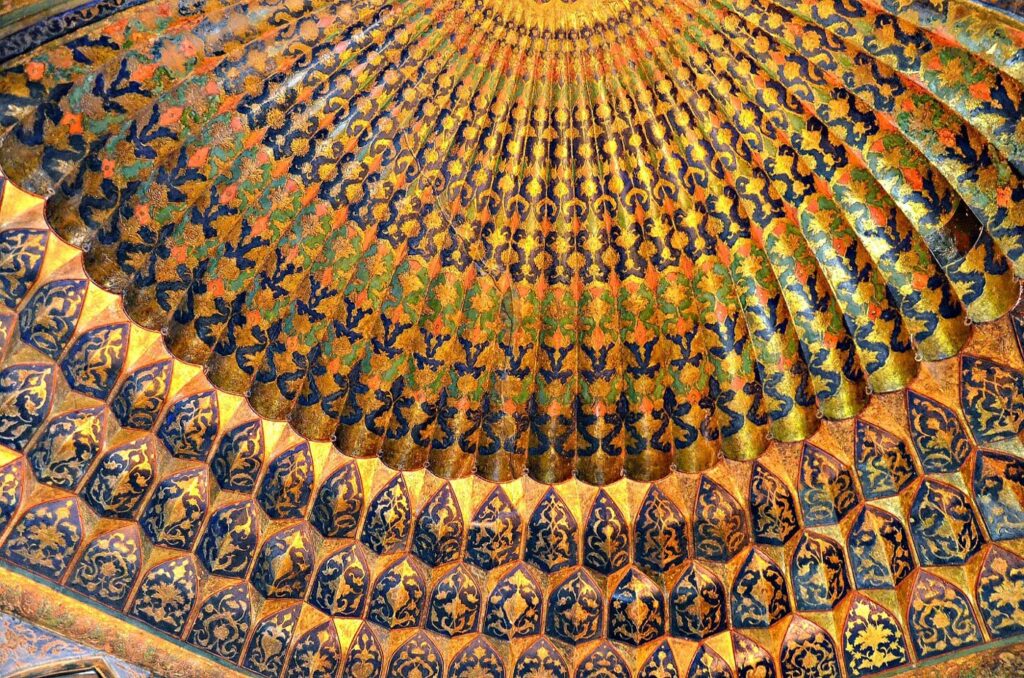
A magnificent dome crowns the mausoleum, adorned with intricate tilework and mesmerizing geometric patterns, showcasing the artistic and architectural style of the Safavid era.
Precise details about the architect or designer of Sheikh Safi al-Din Ardabili’s Tomb remain unknown. However, it is established that the construction took place during the reign of Shah Tahmasb I, a ruler of the Safavid dynasty. The construction of the Khanegah and Shrine Ensemble spanned several years, with estimates suggesting the process extended over several decades from the 16th to the 17th century.
The materials used in the construction include brick, stone, and plaster. The decorative elements feature exquisite tilework, intricate wooden carvings, and adorned stucco designs. Recognized as an architectural masterpiece, the Tomb of Sheikh Safi al-Din Ardabili represents a harmonious blend of Iranian, Islamic, and Safavid architectural elements.
Sheikh Safi Tomb Sections
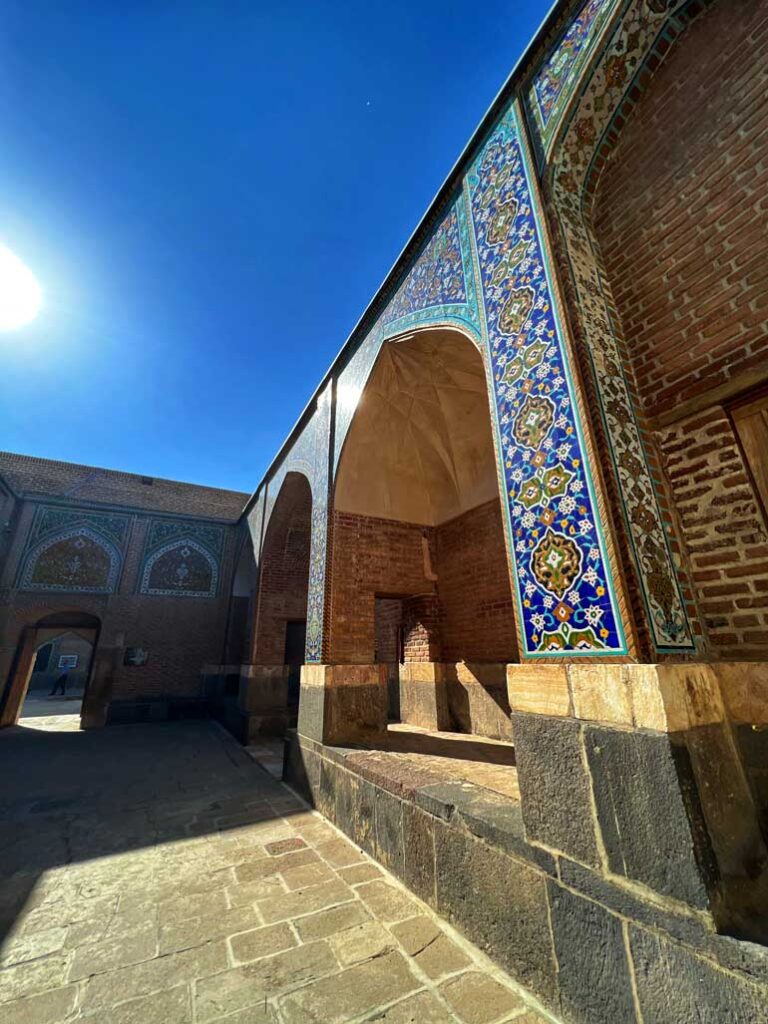
Sheikh Safi al-Din Ardabili’s Tomb, a 16th-century architectural masterpiece, epitomizes Islamic and Persian design. With its intricate tilework and ancient inscriptions, it offers a glimpse into Iran’s rich history. Ideal for history buffs and cultural tourists eager to explore Iran’s artistic and spiritual heritage.
Main Entrance and Gate
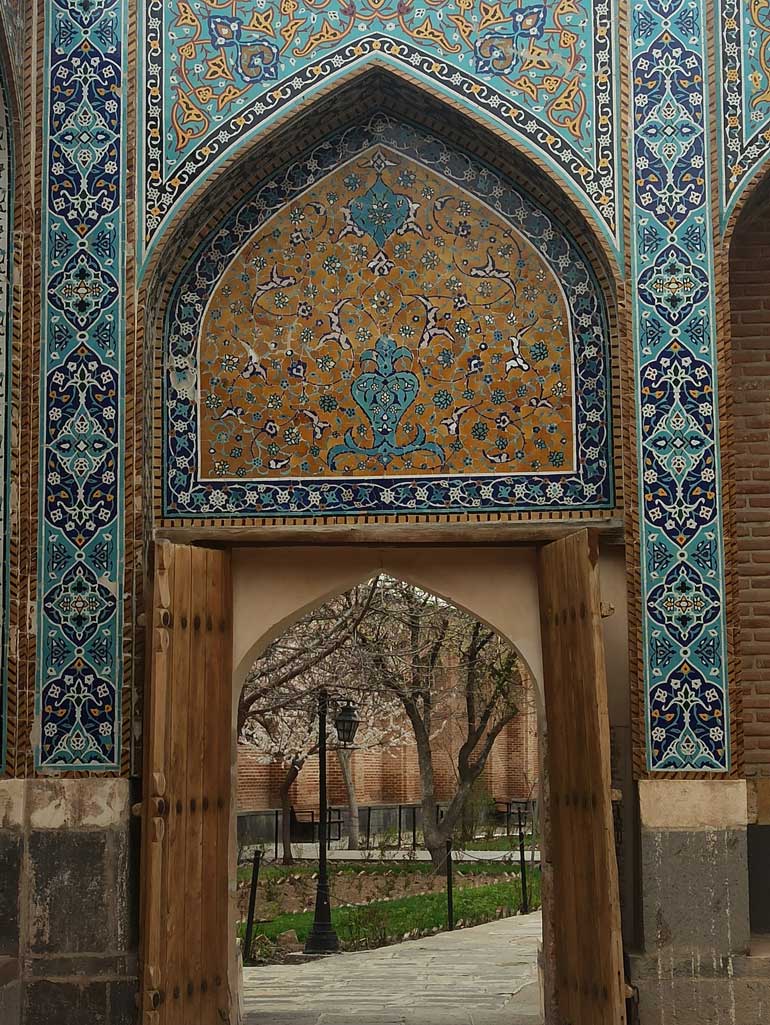
Upon entering through the main gate, visitors are greeted by intricate architectural details adorned with tilework, calligraphy, and various motifs, marking the entrance to the tomb.
Inner Courtyard and Mausoleum’s Precinct
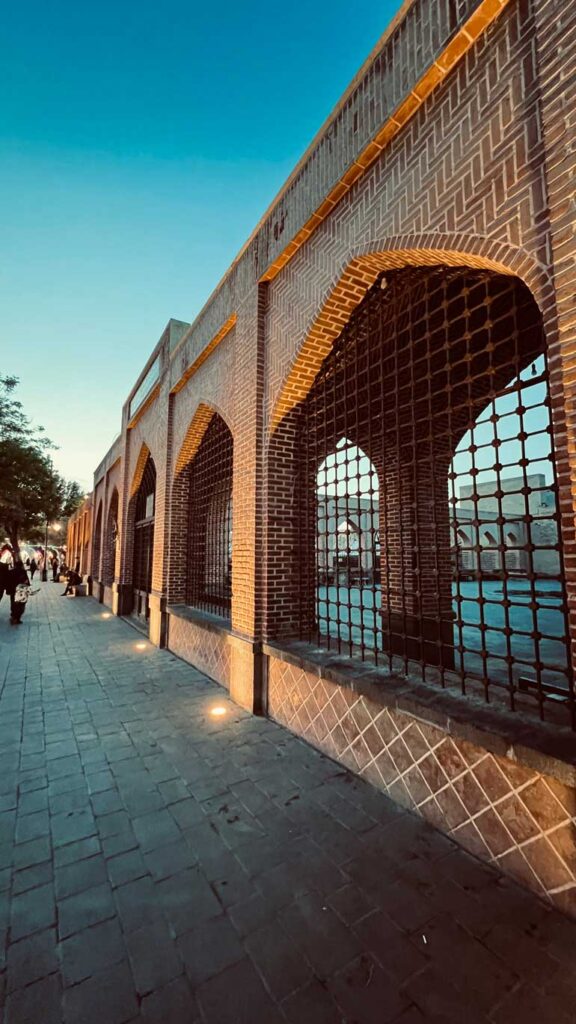
The expansive inner courtyard offers a tranquil open space, beautified with gardens, fountains, and green pathways, leading to a serene atmosphere for visitors.
Iwan and Marble Tombstones
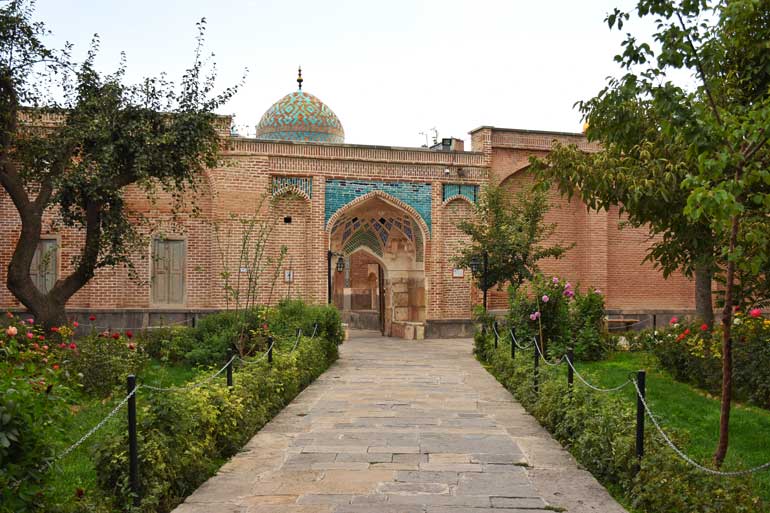
An iwan leads to the burial area, where marble tombstones pay homage to the departed souls of the Safavid dynasty, offering a space of respect and remembrance.
Jannat Sara
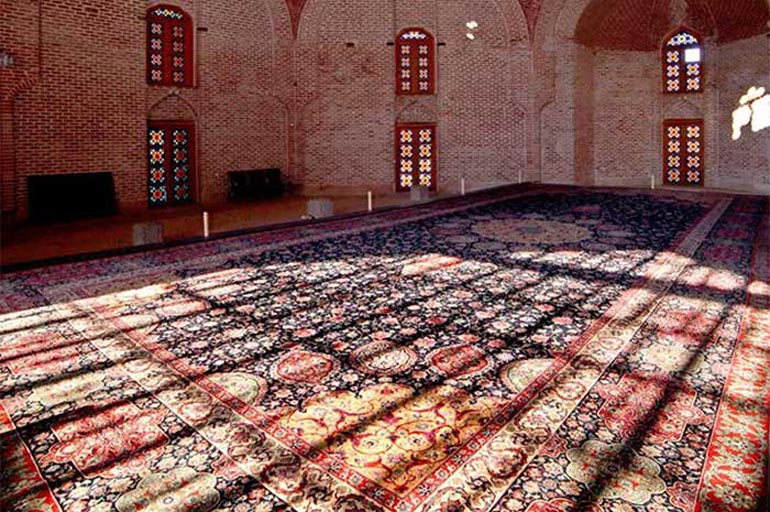
Jannat Sara, a serene area within the tomb, features unique architecture and a beautiful garden, providing a peaceful retreat for contemplation and inner peace.
Allah Allah Dome and Sheikh Safi’s Tomb
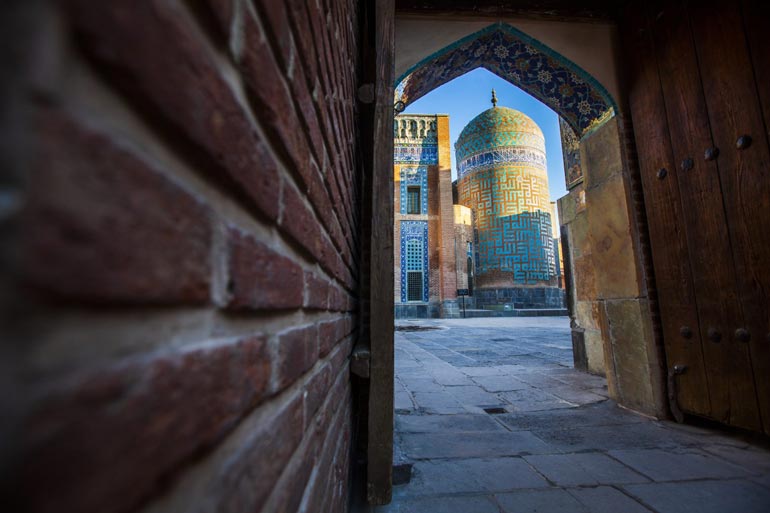
The Allah Allah Dome covers Sheikh Safi’s burial site, showcasing a significant architectural element with mesmerizing tilework and geometric patterns, representing the artistry of the Safavid era.
Tomb of Shah Ismail I
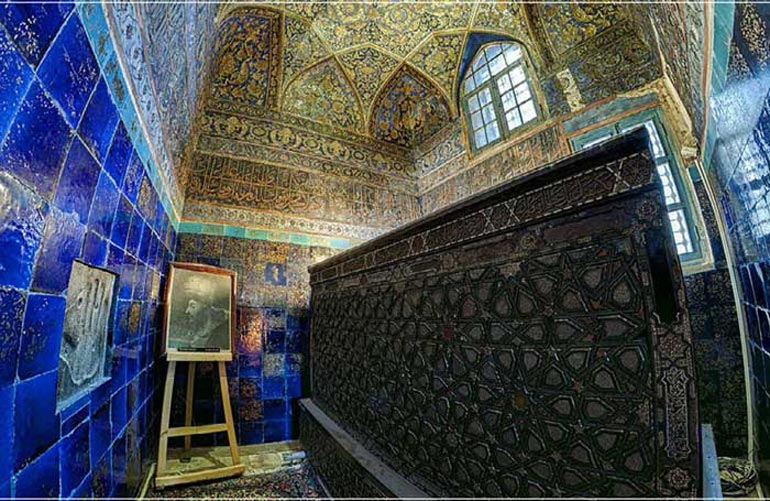
Another unique feature is the tomb of Shah Ismail I, the Safavid dynasty’s founder, positioned at a central point within the complex and recognized as a key historical and tourist site.
Chini Khaneh (Porcelain House)
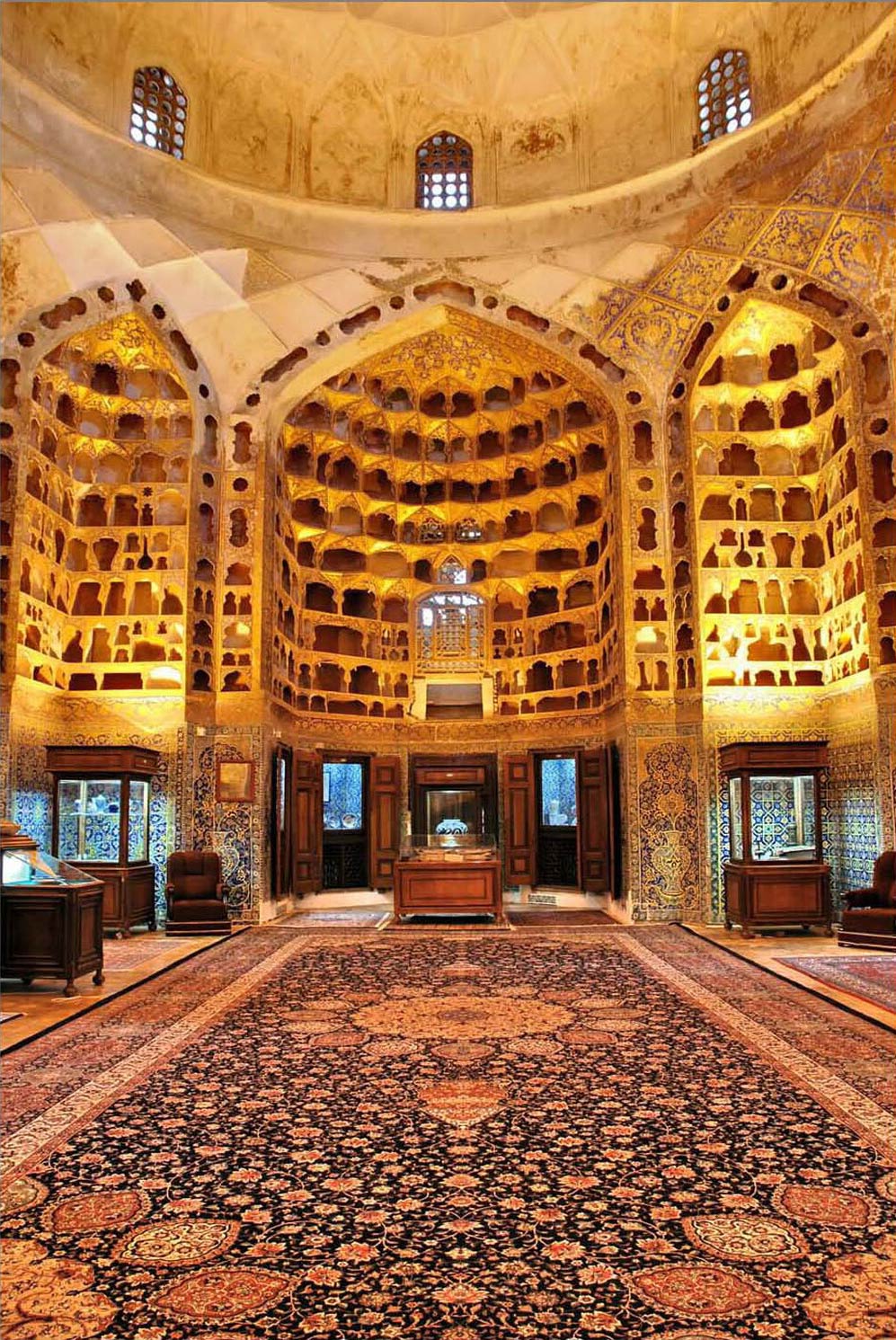
The Chini Khaneh, or Porcelain House, exhibits distinctive architecture, intricate wooden carvings, vibrant colors, and Chinese motifs, reflecting the cultural exchanges during the Safavid reign.
Haram Khaneh Mausoleum
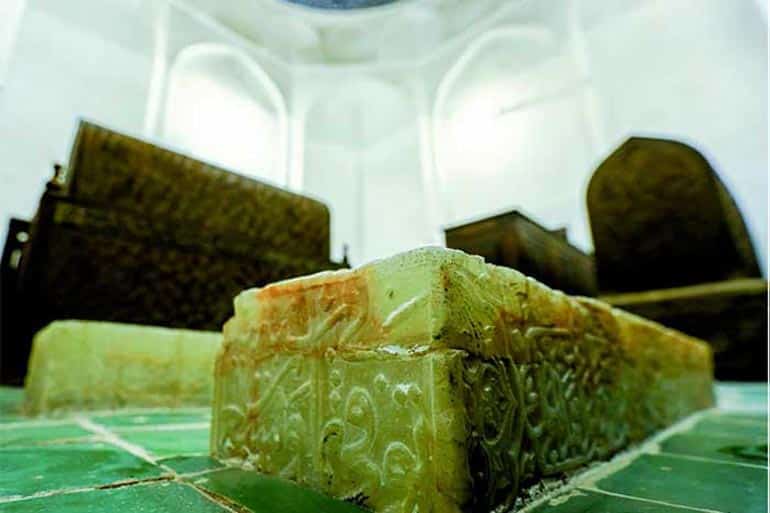
Haram Khaneh includes the graves of various figures associated with the Safavid dynasty, Sufi leaders, and other historical personalities, adorned with meticulous tilework, calligraphy, and other decorative elements.
Old and New Chelle Khaneh
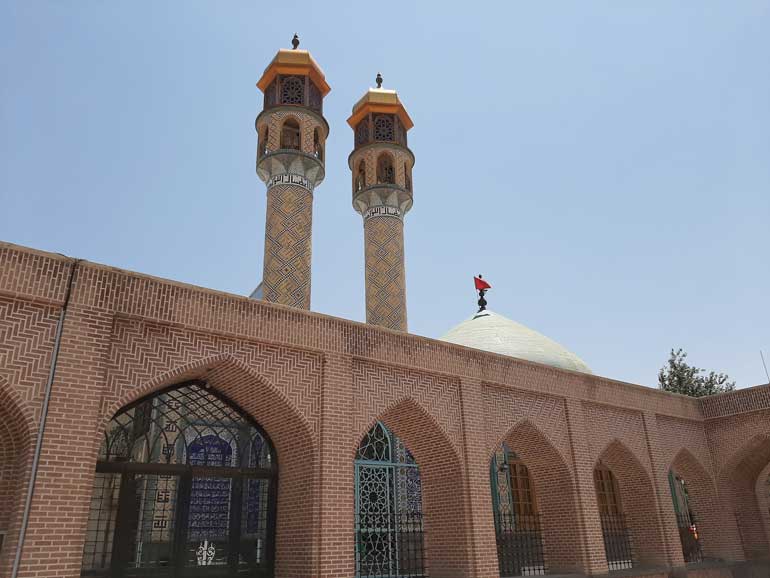
The complex houses two Chelle Khaneh: the Old Chelle Khaneh, associated with Sheikh Safi al-Din himself, and the New Chelle Khaneh, dedicated to Sadr al-Din Musa. While the Old Chelle Khaneh is less visible due to its location, the New Chelle Khaneh has partly turned into ruins, situated on the western side of the central courtyard.
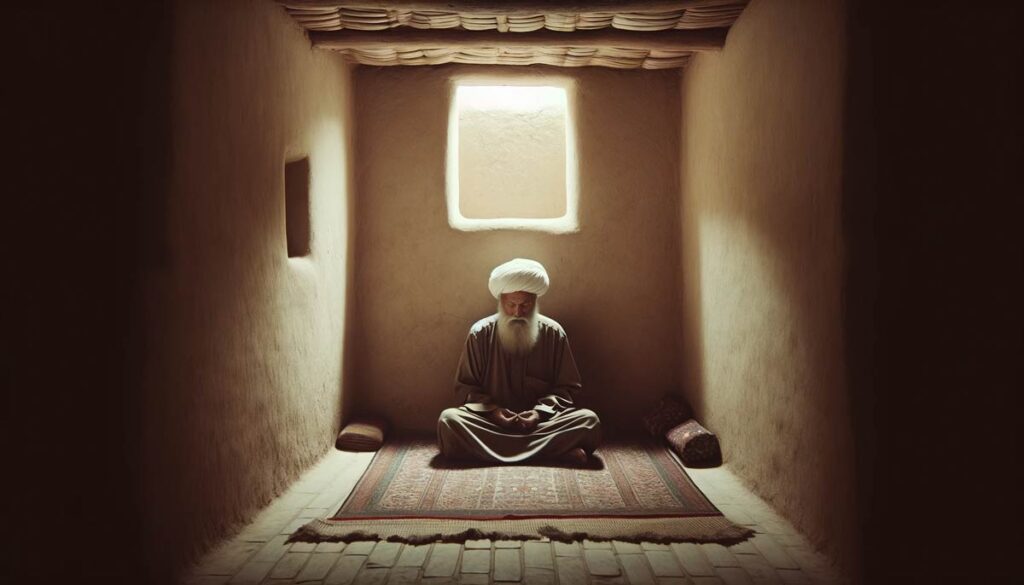
What is Chelle Khaneh?
“Chelle Khaneh” refers to a traditional form of retreat used primarily in Persian Sufism, known as a place for spiritual seclusion and meditation. The term itself, combining “Chelle” (meaning “forty” in Persian) with “Khaneh” (meaning “house” or “home”), directly translates to “the house of forty.” This name signifies the traditional period of forty days and nights of secluded worship and fasting, a practice believed to help individuals achieve deeper spiritual insights and connection.
The concept is rooted in the belief that extended periods of solitude, prayer, and fasting within these retreats can lead to profound personal transformation and enlightenment. Chelle Khanehs are often part of larger Sufi complexes or mosques, providing a dedicated space for those seeking to deepen their spiritual practices away from the distractions of daily life.
Dar al-Hefaz Mausoleum
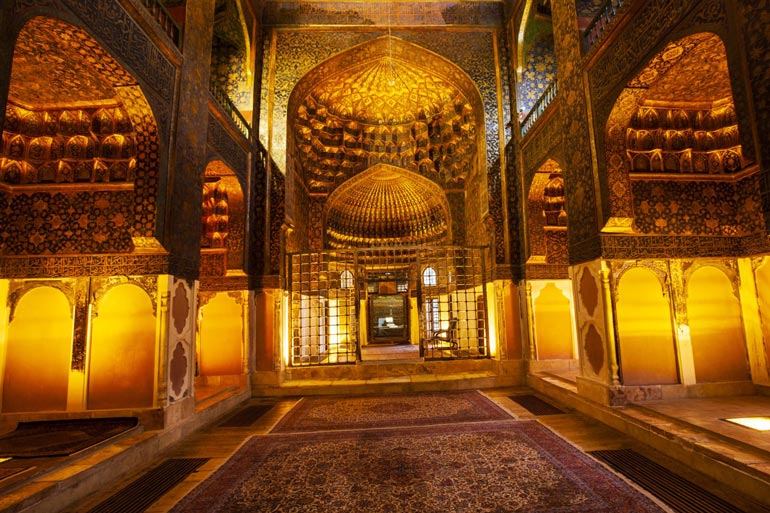
Dar al-Hefaz, also known as the Quran House, served as an educational space for Quran memorization and recitation, playing a vital role in the religious and scholarly activities of the Safavid era.
Dar al-Hadith
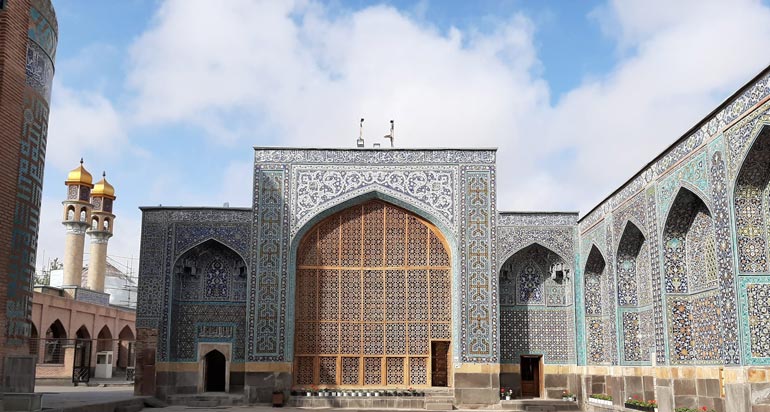
Dedicated to the study, teaching, and dissemination of Hadith literature, Dar al-Hadith played a significant role in the intellectual and religious activities during the Safavid period, focusing on Islamic jurisprudence and religious sciences.
Martyrs’ Cemetery (Shahidgah)
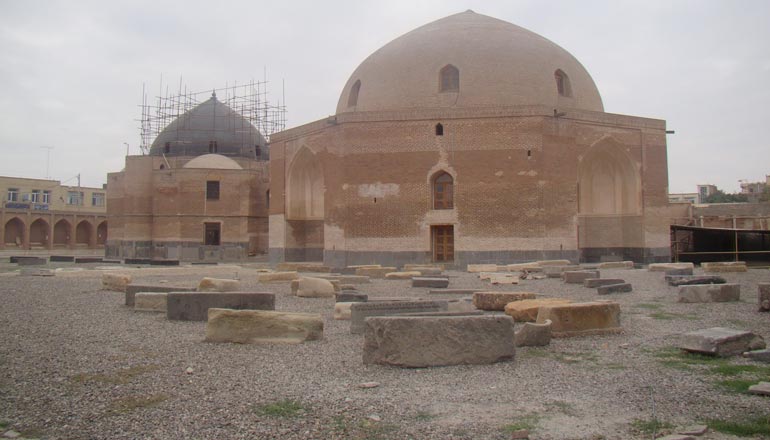
The Martyrs’ Cemetery, also known as Shahidgah, serves as a memorial and place of honor for martyrs, featuring rows of graves marked with tombstones or memorials, and is a sacred site where visitors often come to pay their respects.
Decorative Elements of the Tomb
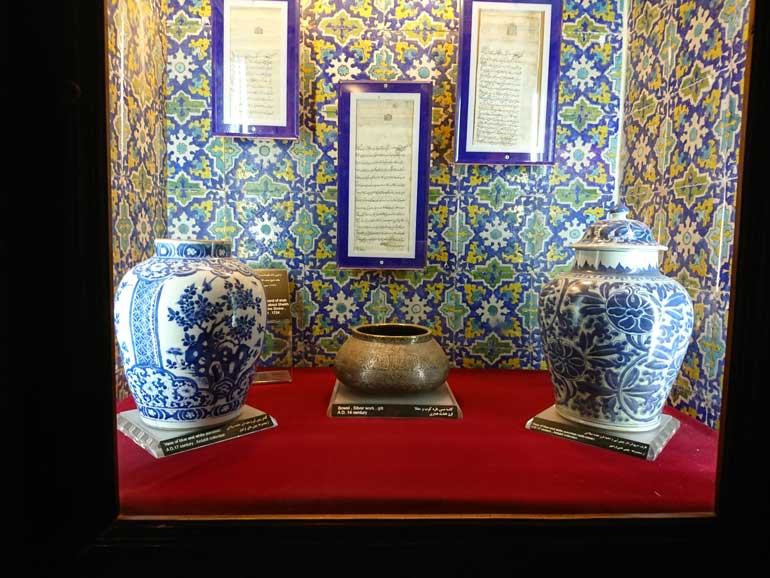
The Tomb of Sheikh Safi al-Din Ardabili is adorned with exquisite decorations, captivating anyone’s attention at first glance. These embellishments showcase mastery over Iranian and Islamic art and craft.
Vibrant Colors
The dome and walls of the mausoleum display a rich palette of colors, including shades of blue, turquoise, green, and gold, creating an enchanting visual effect that evokes a sense of spirituality and elegance.
Calligraphy
The monument is embellished with skilled Arabic and Persian calligraphy by talented artisans, adorning walls, arches, and domes. These inscriptions typically comprise Quranic verses, prayers, and poetic excerpts, conveying spiritual messages and enhancing the aesthetic appeal of the space.
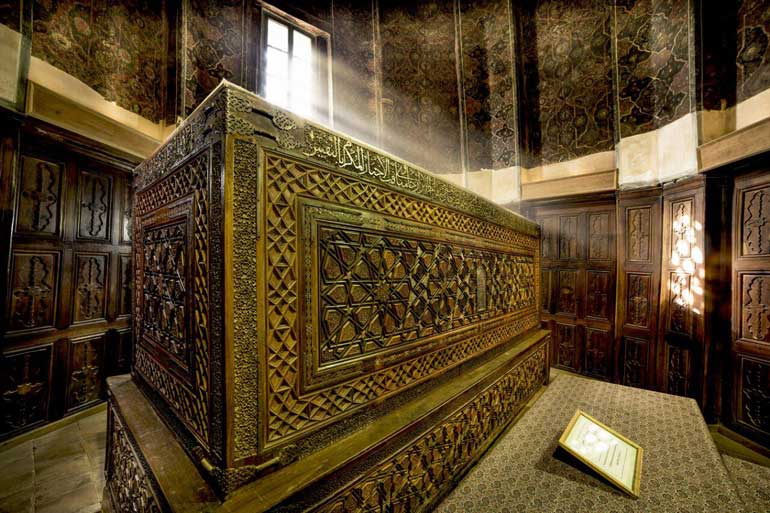
Historical Inscriptions
Throughout the tomb, there are inscriptions with deep religious and philosophical meanings, including quotes from Sheikh Safi al-Din Ardabili’s teachings, poetic verses, and praises of Allah and Prophet Muhammad. These inscriptions serve as a bridge connecting the past with the present, offering insights into the spiritual heritage of the site.
Tilework
Another highlight is the intricate tilework known as ‘Mosaic faience’, a hallmark of Iranian or Islamic tilework. The tiles are meticulously arranged to form geometric patterns, floral motifs, and complex designs that showcase the artistic and architectural brilliance of the Safavid era.
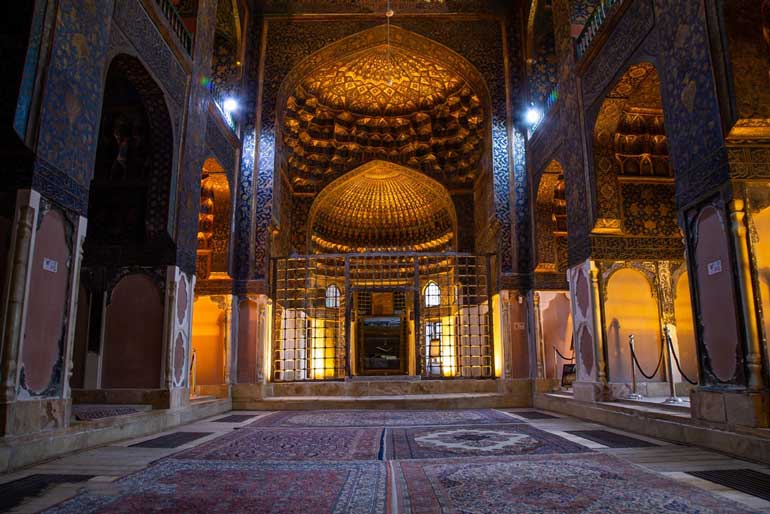
Muqarnas (Stalactite Work)
Muqarnas, or decorative stucco work found on ceilings and arches, consists of small, three-dimensional geometric elements creating a honeycomb-like structure. This feature not only serves aesthetic purposes but also structural ones, adding depth, texture, and beauty to the interior spaces.
These decorative elements together create a masterpiece of architecture that stands as a testament to the rich cultural and spiritual legacy of Sheikh Safi al-Din Ardabili and the artistic zenith achieved during the Safavid era.
It seems the search did not yield the specific information related to the access routes to Sheikh Safi al-Din Ardabili’s Tomb. Based on the details provided and without specific references from the documents, here’s a general guide:
Sheikh Safi Tomb Access
Reaching the Tomb of Sheikh Safi al-Din Ardabili in Ardabil offers various travel options, catering to visitors from near and far.
By Air
The closest airport to Sheikh Safi al-Din Ardabili’s Tomb is Ardabil International Airport, approximately 11 kilometers southeast of the tomb. From the airport, a taxi or rental car can get you to the tomb in about 15 to 20 minutes, making it a convenient choice for international and domestic travelers.
By Train
For those preferring rail travel, Ardabil’s railway station is the nearest to the tomb, located roughly 4 kilometers away in the city center. Taxis and public transport services are available at the station, offering a quick 10 to 15-minute journey to the tomb.
By Road from Tehran
Travelers embarking from Tehran have a scenic drive ahead. The route involves:
- Heading west on the Tehran-Qazvin Freeway to reach Qazvin, a distance of about 152 kilometers.
- Continuing northwest on the Qazvin-Rasht Highway to Rasht, covering around 200 kilometers.
- From Rasht, taking the Rasht-Ardabil Highway leads you directly to Ardabil after approximately 156 kilometers.
- Upon entering Ardabil, follow the signs or use navigation apps like Google Maps to locate Sheikh Safi al-Din Ardabili’s Tomb within the city.
These routes provide a blend of convenience and scenic beauty, making the journey to Sheikh Safi al-Din Ardabili’s Tomb as memorable as the destination itself.
It appears the specific information regarding the best time to visit Sheikh Safi al-Din Ardabili’s Tomb and the related facilities or nearby attractions wasn’t directly found within the document. Based on the provided details and without direct references from the documents, here’s a structured guide:
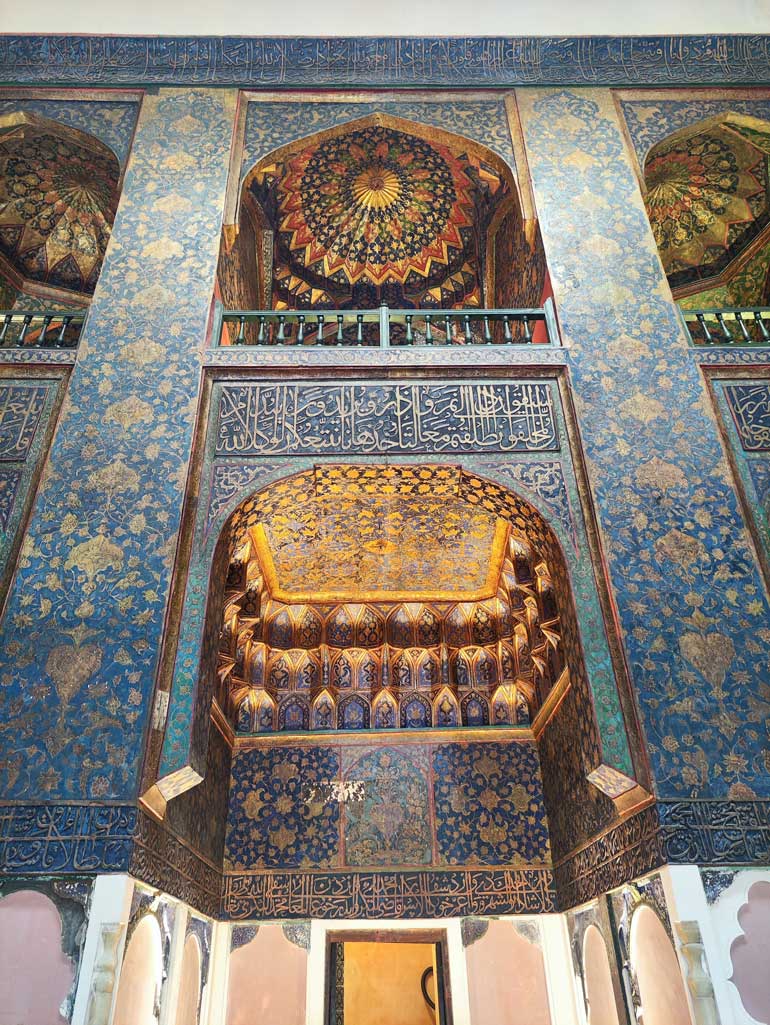
Best Time to Visit
Visiting Sheikh Safi al-Din Ardabili’s Tomb can vary in experience depending on factors like weather, local events, and peak tourist seasons. For cost savings and avoiding crowds, it’s generally recommended to travel during off-peak seasons. In Ardabil, the quieter seasons are typically in winter and summer, when accommodation and travel costs may be lower compared to the tourist high seasons.
For a peaceful and focused visit, weekdays, especially outside of public holidays, are advisable. Early mornings or late afternoons are considered optimal times. Remember to consider Ardabil’s weather, with cold winters and mild summers; if you prefer to avoid cold and snow, summer visits are recommended.
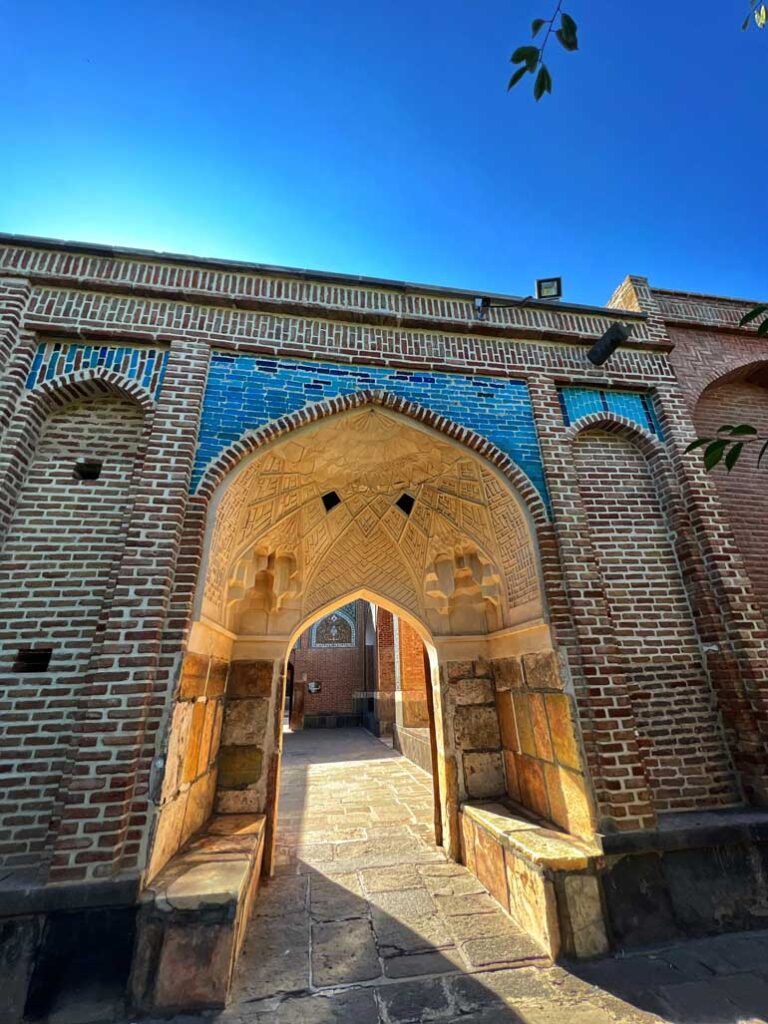
Sheikh Safi Tomb Facilities
The tomb usually has accessible public parking, removing any concerns about vehicle storage. For dining, local restaurants near the tomb offer a chance to enjoy local cuisine and relax.
The tomb itself provides a serene atmosphere for prayer and reflection, offering a spiritual and peaceful experience for visitors.
Nearby Highlights Around
- Ali Qapu: Close to the tomb, this was a residence and administrative building for Safavid kings, known for its unique architectural features and art elements. The main entrance is especially notable for its stunning tilework and calligraphy.
- Historic House of Khadem al-Sharia: A beautiful Qajar-era building near the tomb, once associated with Sheikh Safi al-Din Ardabili. Unfortunately, much of this building is now abandoned, with only remnants of its former beauty visible.
- Seven Springs Bridge (Pol-e Haft Cheshmeh): A historic and picturesque bridge near the tomb, offering a glimpse into Safavid-era architecture. Located at the start of the Baliqly Chay River’s coastal road.
- Ardabil Anthropology Museum: Situated near the tomb, this museum showcases the diverse cultural heritage of Ardabil’s people through statues, traditional costumes, and local artifacts, providing insights into the region’s customs, language, and cuisine.
Tips for Visitors
Wearing comfortable shoes is recommended due to potential long walks. Protective clothing against the sun, sunscreen, sunglasses, and a hat are also advisable. For photography and cooler temperatures, early morning or late afternoon visits are ideal.
Visiting Sheikh Safi al-Din Ardabili’s Tomb is an opportunity to step away from the present and immerse in a realm of respect and spirituality, with its breathtaking architecture and decorations showcasing Iran’s rich cultural and historical heritage.
Read More



